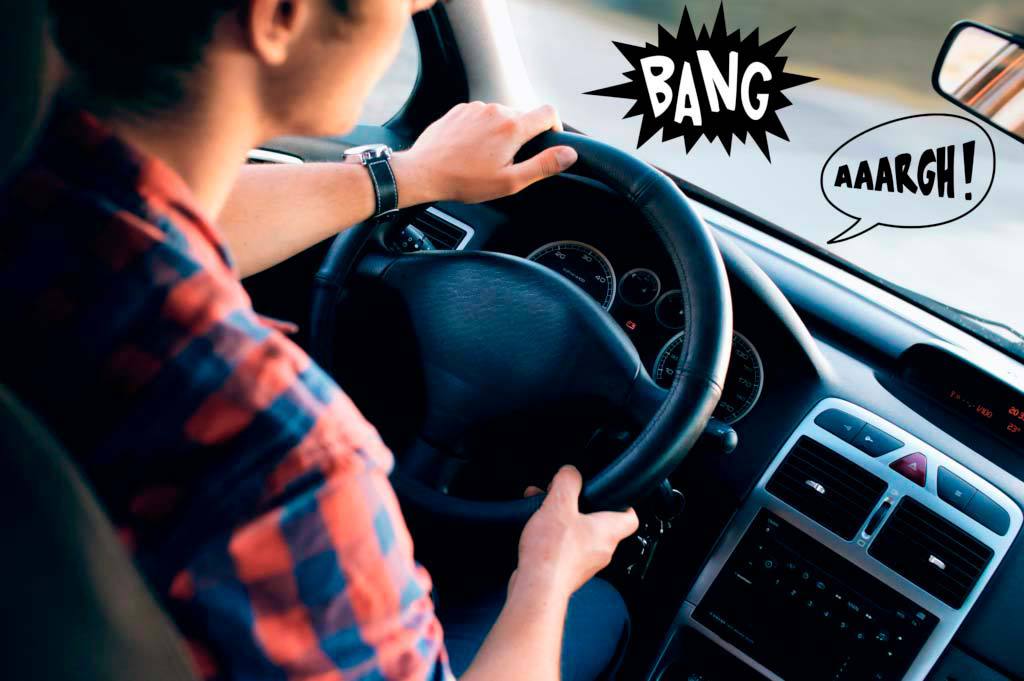Over time, we get to know all the noises our car’s engine makes, and whenever a new sound appears, it intrigues us. Well, these noises can tell us a few things. Today, we’re going to explain what can happen, so that you can pass your car inspection without any problems and save money on expensive repairs.
What is that noise? What could be going on in your car?
- The engine is louder than usual and makes a hoarse noise when accelerating.
- A puffing noise appears under your car when you start it.
- Loud noise when driving, which becomes even louder when accelerating.
- Brake noise. When you stop, do the brakes squeal or shake?
- Steering or suspension rattle or clatter.
How can the noise of your car’s engine influence the result of the MOT?
- Engine noise may indicate decompensation and that the injectors need cleaning. When carbon builds up, it can increase engine noise and pollutant emissions. Cleaning the injectors will restore balance to your car’s engine, reduce noise and cut emissions.
- Your car’s noise can also warn you of a leak in the exhaust system. To pass the MOT, you’ll need to check it and replace the part if necessary. A leak in the exhaust system can also affect your car’s emissions and cause a breakdown.
- When you’re driving, do you hear a rumbling noise that increases as you accelerate? This may indicate a worn wheel bearing or a bent rim. To avoid problems, check and replace the defective part.
- A noisy or shaking brake may indicate a problem with your car. We recommend that you have it checked by a workshop before submitting your car for roadworthiness testing.
- Steering or suspension noise when cornering or driving over a bump in the road may indicate a problem with a suspension component or rubber bushing.
Solutions to reduce engine noise and pass the MOT?
- Xtreme Diesel Emission Reducer / Diesel Injector Cleaner / Petrol Injector Cleaner
As mentioned above, keeping injectors clean restores engine balance and reduces noise. More importantly, it will restore efficient combustion, enabling you to pass your MOT emissions test with flying colors. It will also reduce exhaust fumes. - Petrol Injector Cleaner / Diesel Injector Cleaner
An air leak in the exhaust, depending on its location, can increase your vehicle’s fuel consumption. For this reason, we recommend cleaning the injection after the repair, as an air leak in the circuit will cause the sensors to detect too much oxygen. This phenomenon is counterbalanced by the injection of more fuel, resulting in higher fuel consumption and expenses. What’s more, when an engine fills up with petrol, it can lead to pollution problems, which will prevent you from passing your MOT. - In the event of tire or bearing failure, it’s important to check each wheel and identify where the noise is coming from. Driving down the road and hearing the noise may indicate a bearing in the wheel or a deformed tire. In both cases, the faulty part must be identified and replaced.
- If the brakes make a noise or produce a jolt or vibration during braking and acceleration, this may indicate a problem. We recommend that you have your car checked by a professional and replace any faulty parts.
- Any steering or suspension noise during cornering should also be checked by a specialist, and defective parts replaced.
How to pass your MOT with peace of mind
In addition to checking engine noise, we recommend that you take the following steps to pass your MOT:
- Clean injection to pass emissions test.
- Make sure your car’s maintenance history is up to date and that you’ve changed your oil on time. Flushing the engine’s lubrication system before changing the oil will allow the new oil to better protect the engine and eliminate deposits that could affect your vehicle’s emissions.
- Check oil and coolant levels before testing to ensure there are no overheating problems during the test.
- Check your lights to make sure they’re all working properly.
- Check the operation of your front and rear wipers, ensuring that the washer jet on the glass is uniform and cleans efficiently, without streaks, noise or vibration.
- Check visibility. Make sure there are no objects on the windshield that could restrict your field of vision.
- Check your car tires. Make sure they’re all at the right pressure and that they’re not worn below the minimum 1.6 mm inside the tire’s center tread. Check the sidewalls for cracks, indentations or bulges.
- Check that all doors open and close correctly and easily.
- Check the seat belts to ensure that the buckles lock properly and that there are no cuts or frays in the seat belt webbing.
- Check that vehicle license plates are clean and visible.
We hope you’ll share your experience with us as you follow the suggested steps to reduce your car’s engine noise and pass your MOT.
If you have any questions, please do not hesitate to contact us.

Leave A Comment